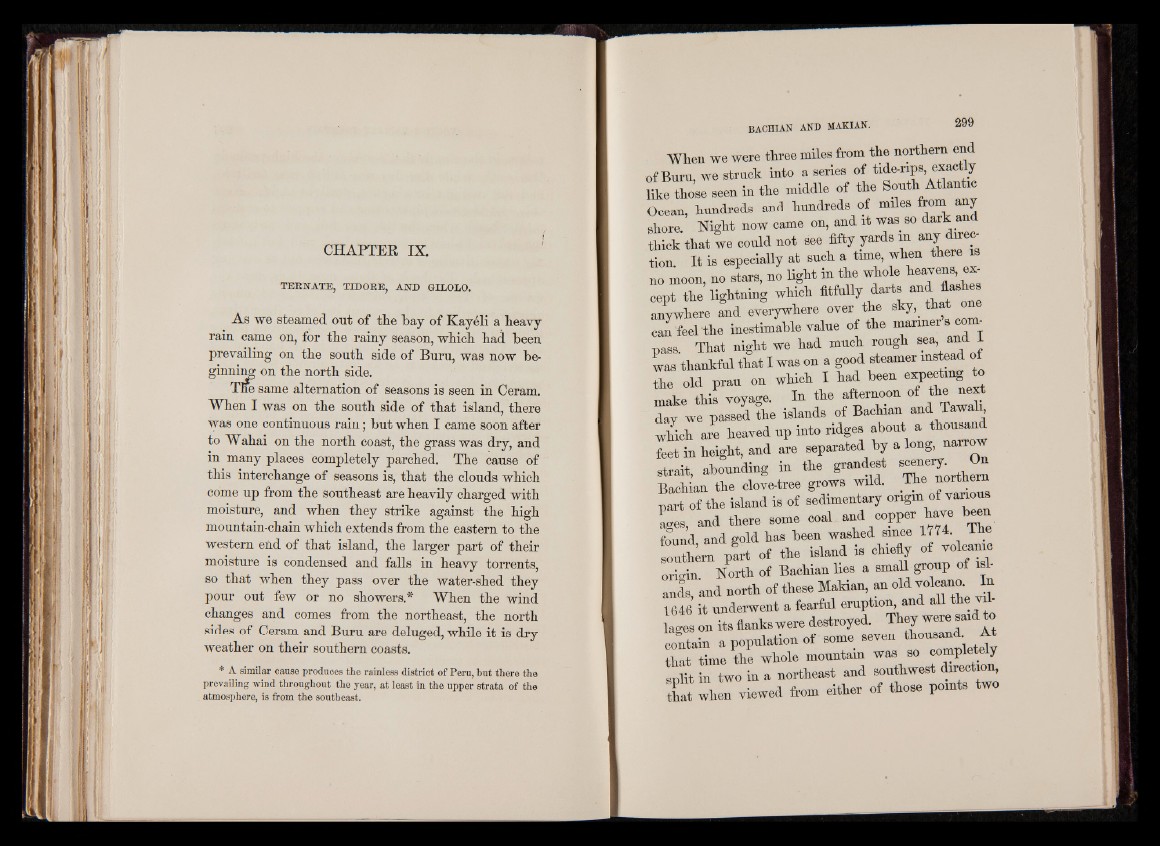
CHAPTER IX
i
TERNATE, TIDORE, AND GILOLO.
As we steamed out of the bay of Kay&li a heavy
rain came on, for the rainy season, which had been
prevailing on the south side of Buru, was now beginning
on the north side.
Tne same alternation of seasons is seen in Ceram.
When I was on the south side of that island, there
was one continuous rain; but when I came soon after
to Wahai on the north coast, the grass was dry, and
in many places completely parched. The cause of
this interchange of seasons is, that the clouds which
come up from the southeast are heavily charged with
moisture, and when they strike against the high
mountain-chain which extends from the eastern to the
western end of that island, the larger part of their
moisture is condensed and falls in heavy torrents,
so that when they pass over the water-shed they
pour out few or no showers.* When the wind
changes and comes from the northeast, the north
sides of Ceram and Buru are deluged, while it is dry
weather on their southern coasts.
* A similar cause produces the rainless district of Peru, but there the
prevailing wind throughout the year, at least in the upper strata of the
atmosphere, is from the southeast.
When we were three miles from the northern end
of Buru, we struck into a series of tide-nps exact y
like those seen in the middle of the SouthAtlantic
Ocean, hundreds and hundreds of miles froni any
shore Night now came on, and it was so dark an
thick that we could not see fifty yards in any direction.
It is especially at such a time, when there
no moon, no stars, no light in the whole heavens, except
the lightning which fitfuliy darts H M * * »
anywhere and everywhere over the sky, that o
can feel the inestimable value of the manner’s com-
pass. That night we had much rough sea, and
was thankful that I was on a good steamer instead o
the old prau on which I had been J "
make this voyage. In the afternoon of the next
day we passed the islands of Bachian and Tawali,
which are heaved up into ridges about a thousand
feet in height, and are separated by a long, narr
strait, abounding in the grandest seer^
Bachian the clove-tree grows wild. The northern
part of the island is of sedimentary origin of various
m and there some coal and copper have b^en
found, and gold has been washed since 1774. lh e
southern part of the island is chiefly of volcanic
origin North of Bachian lies a small group of isl-
ands, and north of these Makian, an old volcano
1646 it underwent a fearful eruption and all the vil
lages on its flanks were destroyed. They were said to
contain a population of some seven thousand At
that time the whole mountain was so completely
1 S ¿ tw o in a northeast and southwest direction s p i l t m iw t9 tw Q